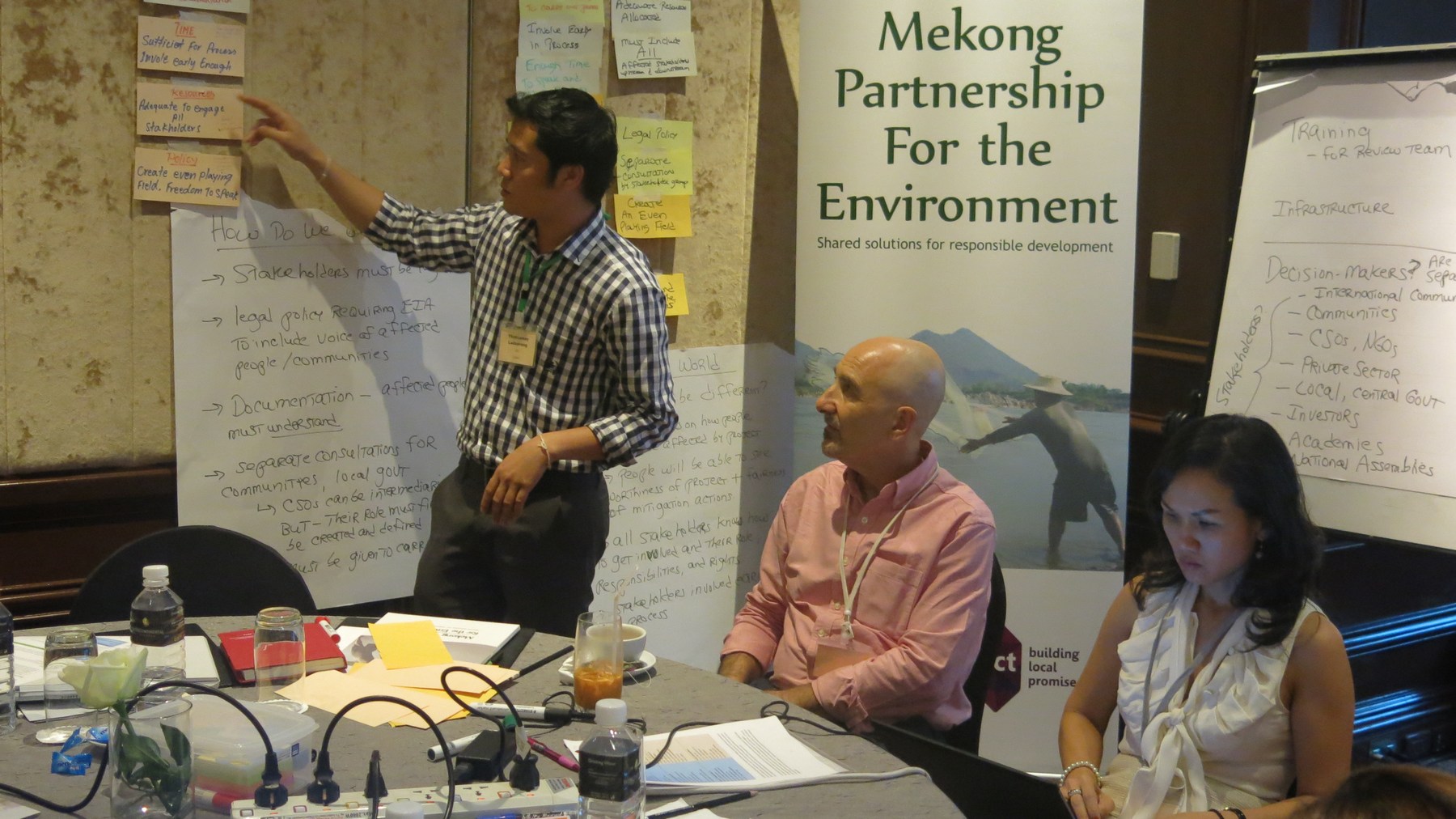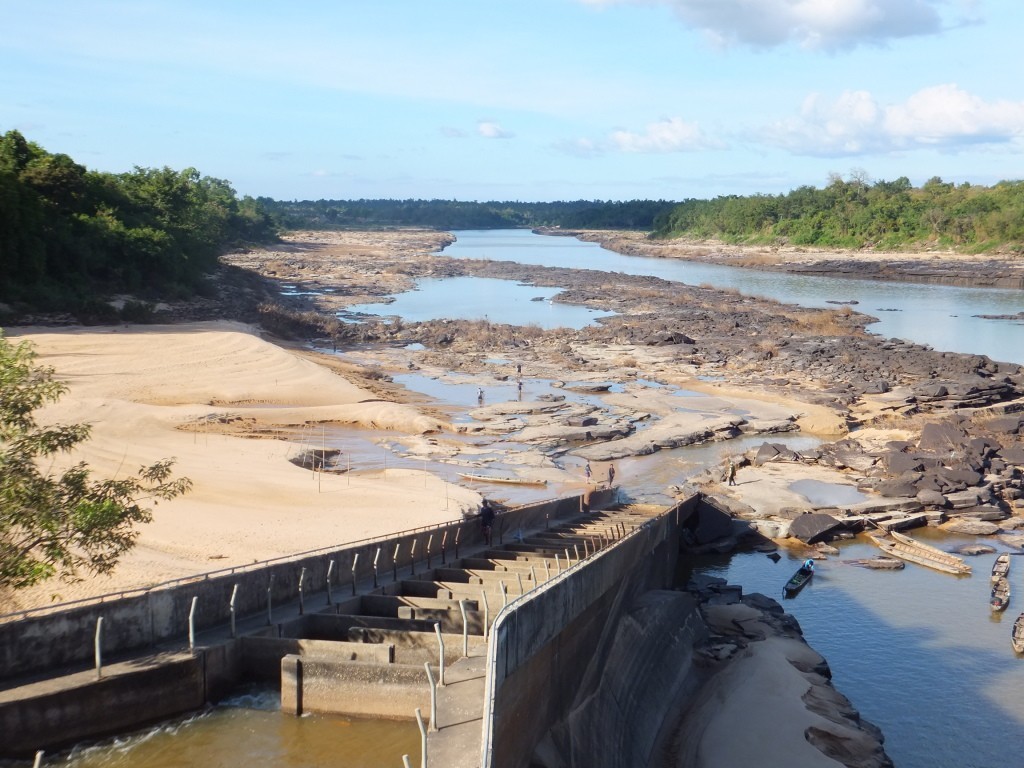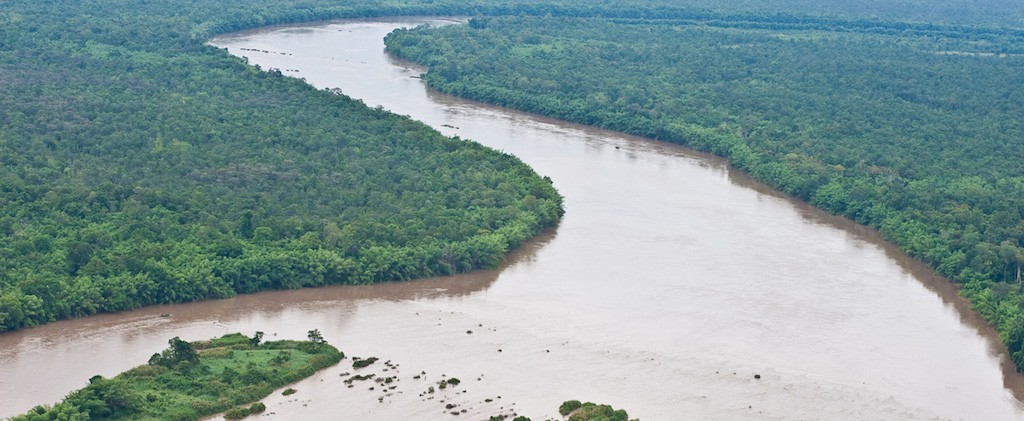Government and civil society representatives highlighted the need for strong and inclusive environmental impact assessment (EIA) policies and practices in the Mekong region at a meeting this week in Bangkok, Thailand.
Organized by the United States Agency for International Development (USAID) -supported Mekong Partnership for the Environment (MPE) project and the Asian Environmental Compliance and Enforcement Network, the December 1-3 event, “Environmental Impact Assessment Policy and Practice in the Mekong Region: Safeguarding Sustainable Development,” brought together more than 50 government and civil society representatives from across the region. Participants discussed ways in which EIAs can better protect communities and the environment from harm due to poorly planned projects.
“The pace of development in the Mekong region is remarkably fast,” said MPE Director Christy Owen. “It’s crucial for all parties – governments, citizen groups, the private sector – to come together for the sake of communities and the environment.” Representatives from governments and civil society organizations from Cambodia, Laos, Myanmar, Thailand and Vietnam agreed that public participation in the EIA process is critical for large-scale development projects such as hydro-power dams, mines, ports and industrial zones. Civil society participation is a best practice around the world. For example, consulting civil society is a core and required part of the U.S. government’s EIA process that results in better projects. “If we involve affected communities, we can help avoid conflicts,” said Nop Virak of Vishnu Law Group, a civil society organization working with the Cambodian government on their new EIA law. “Whoever is doing the EIA needs to go speak to the communities. It’s impossible to do everything from our desks.”
An official from the United States Environmental Protection Agency (EPA) also participated in the event. The EPA urged participants to continue to improve laws and practices, and offered to share best practices and lessons learnt from U.S. development experiences. “EIA processes have incredible potential for identifying and resolving issues,” said EPA official Davis Jones. “The more you can involve stakehold¬ers early and throughout, the better the project.”
MPE aims to build off of the event’s momentum by facilitating further dialog toward a shared action plan for promoting a regional EIA standard and responsible business and investment practices. Throughout the Mekong region, there is a wave of reform efforts related to EIA policy, including a new draft EIA law in Cambodia and a Vietnamese environmental protection law set to take effect in early 2015. These reforms, along with the launch of the ASEAN Economic Community (AEC) next year, are revealing new opportunities to improve EIA policy and practice and address the increasingly regional impacts of investments.
“We’re entering AEC soon. All our countries have our own legislation, but in practice, we each have challenges,” said Indhira Euamonlachat, a participant from the Thai Office of Natural Resources and Environmental Policy and Planning (ONEP). “This (EIA) event is a good chance to look for cooperation between governments – and also civil society.”
Mekong Partnership for the Environment is a four-year, USAID-funded project implemented by the non-governmental organization Pact. MPE supports constructive engagement among governments, business and civil society to promote socially and environmentally responsible development in the Mekong region.
For more information: • Contact Adam Hunt, Media and Communications Director, Mekong Partnership for the Environment: [email protected] • Read USAID’s MPE fact sheet: http://www.usaid.gov/asia-regional/fact-sheets/mekong-partnership-environment • Visit Pact’s MPE information page: http://www.pactworld.org/mpe





